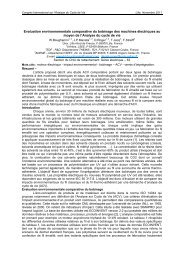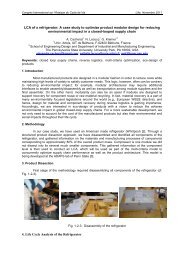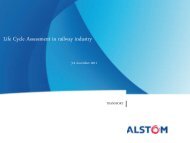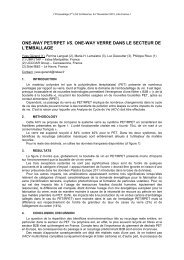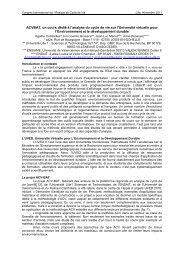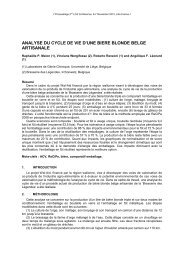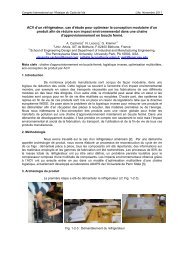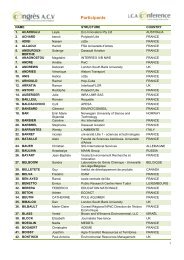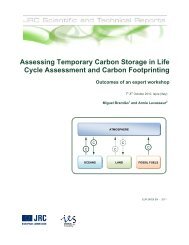Untitled - avniR
Untitled - avniR
Untitled - avniR
Create successful ePaper yourself
Turn your PDF publications into a flip-book with our unique Google optimized e-Paper software.
Congrès International sur l’Analyse du Cycle de Vie Lille, Novembre 2011<br />
LCA of a refrigerator: A case study to optimize product modular design for reducing<br />
environmental impact in a closed-looped supply chain<br />
A. Cacherat 1 N. Lecocq 1 G. Kremer 2<br />
1 Univ. Artois, IUT de Béthune, F-62400 Béthune, France<br />
2<br />
School of Engineering Design and Department of Industrial and Manufacturing Engineering,<br />
The Pennsylvania State University, University Park, PA 16802, USA<br />
alexandre.cacherat@gmail.com; nathalie.lecocq@univ-artois.fr; gek3@engr.psu.edu<br />
Keywords: closed loop supply chains, reverse logistics, multi-criteria optimization, eco-design of products<br />
1. Introduction<br />
Most manufactured products are designed in a modular fashion in order to reduce costs while<br />
maintaining high levels of variety to satisfy customer needs. This logic, however, often can be contrary to<br />
reducing environmental impact; for example, modular architectures may require additional interfaces to<br />
enable assembly/disassembly as well as transportation among module suppliers and the final assembler.<br />
On the other hand, modularity can also be an asset if modules are designed to support recovery for<br />
component reuse or raw material recycling. In fact, material recovery is a part of many environmentally<br />
focused legislations around the world (e.g., European WEEE directive), and hence, design for material and<br />
component recovery during reverse logistics is gaining importance. Accordingly, we are interested in ecodesign<br />
of products with a vision to reduce the adverse environmental impact in global closed-loop supply<br />
chains. For a more sustainable development, we not only need to account for the cost of the manufactured<br />
products but also their environmental and social impacts throughout their life cycle.<br />
2. Methodology<br />
In our case study, we have used an American made refrigerator (Whirlpool) [2]. Through a<br />
structured product dissection approach, we have disassembled and identified all components of the<br />
refrigerator, and gathered information on the materials and manufacturing processes of components<br />
corresponding to approximately 80% of the overall product mass. Compressor is one module we did not<br />
dissect into its several much smaller components. This gathered information at the component level is then<br />
used to conduct an LCA, which will be used as part of the multi-criteria model to concurrently optimize<br />
supply chain performance as well as the product architecture. This model is being developed at the<br />
ADAPS lab of Penn State [3].<br />
3. Product Dissection<br />
1-2-3).<br />
First stage of the methodology required disassembling all components of the refrigerator (cf. Fig.<br />
Fig. 1-2-3 : Disassembly of the refrigerator<br />
37



